NEVER ENDING THINGS
Staying ahead of the continuous IoT design cycle p.16
GETTING SENSITIVE
Paper carbon nanotube capacitive sensor measures human sensitivity p.18
PRINTED COPPER
Could it become the new industry standard? p.9
Y2Q LOOMS
Boot loader plays a critical role in IoT system security p.12

PM 40065710 JULY/AUGUST 2023 CANADA’S INFORMATION LEADER FOR ELECTRONIC ENGINEERS AND DESIGNERS EPT.CA
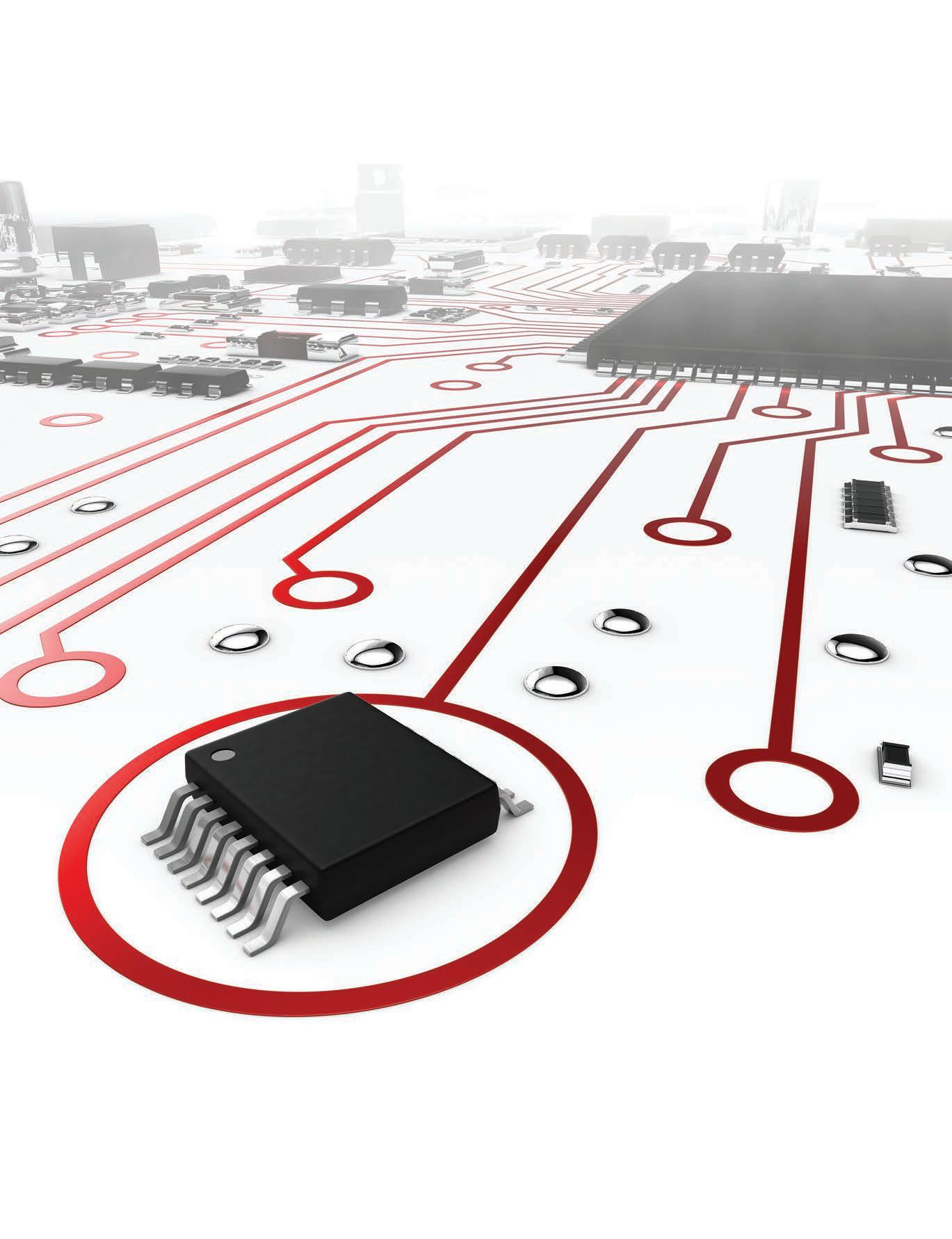









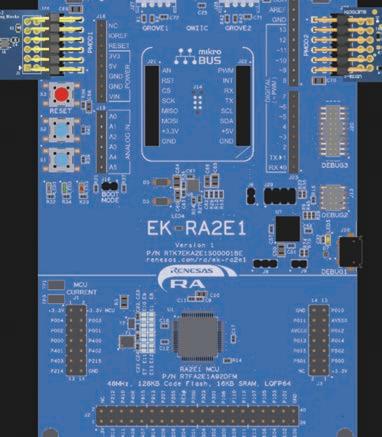






@EPTmagazine COVER STORY 12 A BOOT LOAD When a connected device is turned on, a boot loader goes into action. 16 IO-NEVER-ENDING-T The design paradigm is shifting to provide more value and reduce time to market. 18 HUMAN TOUCH Somalytics’ miniature paper carbon nanotube capacitive sensor is highly sensitive to the human body. Columns 4 EDITORIAL Emerging tech collides in Toronto 8 WEST TECH REPORT Grengine powers the planet with clean energy solutions 9 THINK GREEN Can printed copper become a new industry standard? In every issue 7 NEWSWATCH 19 PRODUCT SOURCE 20 SUPPLY SIDEE 21 AD INDEX 22 DEV BOARDS Infineon TRAVEO T2G Body High Lite Kit JULY/AUGUST 2023 1216 INSIDE Cover photo: © Greentech / Adobe Stock Photos (this page, from top): Adobe Stock; Renesas; Somalytics; Infineon 9 18 Canada: 403-516-1888 USA: 602-833-8591 dynamicsourcemfg.com Are you outgrowing your current Contract Manufacturer? We are your solution. Connect with us today for high quality builds, fast turnaround time, and decades of experience. EPT_Dynamic_April23.indd 1 2023-03-16 3:59 PM
Unleashed tech creates Collision in Toronto
In the ever-evolving landscape o f technology, conferences play a pivotal role in shaping the future. Among these influential gatherings, the Collision Conference – hosted in Toronto this past June - stands tall as a beacon of innovation, bringing together the brightest minds, industry leaders and tech enthusiasts from around the world.
From networking opportunities to cutting-edge insights, Collision is delivered on an unmatched platform, specifically towards fostering collaboration and propelling technological advancements. While the content offered may not synch directly with the pursuits of most electronics engineers, Collision is ‘a must’ for anyone passionate about technology and its impact on society – or simply to connect with individuals who are shaping the future of technology across various sectors.
The global event, now in its third year in Toronto, serves as a melting pot of brilliant minds, including entrepreneurs, investors, start-up founders and established industr y leaders. As one of the most vibrant tech hubs in North America and with a thriving tech ecosystem of its own, Toronto delivered as host – demonstrating its innovative spirit, diverse talent pool and robust start-up culture. Here’s a StatPack on the event: 36,000+ attendees; 920 journalists; 1,490 start-ups; 865 investors; 230 partners; and 118 countries.
Godfather of AI
Of all the big tech content covered over the four-day event, one significant disr uptor was atop everybody’s mind – artificial
intelligence (AI). Thus, one of the most highly anticipated speakers was Geoffrey Hinton, a British-Canadian cognitive psychologist, computer scientist and neural-network pioneer widely considered to be the godfather of AI.
During his presentation, Hinton spoke in detail about the dangers of artificial intelligence (AI). Some specific concerns he cited were bias and discrimination, misinformation, and what he called “warring echo chambers due to the big companies wanting you to click on things that make you indignant.” Hinton then touched on the concern encapsulated in the extinction letter–the idea that AI systems could become more intelligent than humans.
“We have to take seriously the possibility that they get to be smarter than us, which seems quite likely, and they have goals of their own, which seems quite likely,” Hinton said at Collision. “They may well develop the goal of taking control, and if they do that, we’re in trouble. It’s not just science fiction. It’s not just fear-mongering. It is a real risk we need to think about, and we need to figure out in advance how to deal with it.”
Integrating AI
It is true that AI is increasingly being incorporated into electronic designs today and is expected to play a significant role in the near future. Here are some ways AI is expected to be integrated into electronic designs:
Design optimization: AI techniques such as genetic algorithms and neural networks are being used to optimize electronic designs.
Automated design synthesis: A I is being employed to
automate the design synthesis process.
Circuit analysis and simulation: AI techniques, including machine learning and deep lear ning, can assist in circuit analysis and simulation.
Fault detection and diagnosis: AI is being used to develop intelligent systems for fault detection and diagnosis in electronic designs.
Power optimization: AI algorithms are employed to optimize power consumption in electronic designs.
Design verification and testing: AI is being used to improve the efficiency and effectiveness of design verification and testing processes.
Intelligent hardware architectures: AI is influencing the design of hardware architectures themselves.
Edge computing and IoT devices can perform real-time data analysis, make autonomous decisions, and respond to local events without relying heavily on cloud-based processing.
Conclusion
In the near future, we can expect AI to further revolutionize electronic designs by enabling more advanced applications, such as self-learning and adaptive systems, cognitive computing, and human-machine collaboration. AI will continue to enhance the performance, efficiency, and intelligence of electronic devices, leading to new possibilities and innovations in various domains.
As for Collision - or ‘the Olympics of Tech’ – the annual event returns to Toronto in 2024 (June 17-20th) - so mark your calendars!
STEPHEN LAW Editor slaw@ept.ca
Canada’s information leader for electronic engineers and designers

JULY/AUGUST 2023
Volume 45, Number 5
READER SERVICE
Print and digital subscription inquiries or changes, please contact
Angelita Potal
Tel: (416) 510-5113 Fax: (416) 510-6875
Email: apotal@annexbusinessmedia.com
Mail: 111 Gordon Baker Rd., Suite 400 Toronto, ON M2H 3R1
EDITOR Stephen Law slaw@ept.ca · (416) 510-5208
WEST COAST CORRESPONDENT Sohail Kamal · sohail@nextgear.ca
SENIOR PUBLISHER Scott Atkinson satkinson@ept.ca · (416) 510-5207
ACCOUNT MANAGER Joanna Malivoire jmalivoire@ept.ca · direct 866-868-7089
SALES MANAGER Chander Verma cverma@annexbusinessmedia.com cell 437-218-0941
ACCOUNT COORDINATOR
Shannon Drumm sdrumm@annexbusinessmedia.com
MEDIA DESIGNER Lisa Zambri lzambri@annexbusinessmedia.com
AUDIENCE DEVELOPMENT MANAGER
Anita Madden amadden@annexbusinessmedia.com (416) 510-5183
GROUP PUBLISHER Paul Grossinger pgrossinger@annexbusinessmedia.com
PRESIDENT/COO Scott Jamieson sjamieson@annesbusinessmedia.com

EP&T is published eight times per year by ANNEX BUSINESS MEDIA 111 Gordon Baker Road, Suite 400 Toronto, ON M2H 3R1 Tel (416) 442-5600 Fax (416) 510-5134 annexbusinessmedia.com
SUBSCRIPTION RATES
Canada – $58.50 one year; $94.00 two years USA – $134.00 (CAD) per year
International – $183.50 (CAD) per year
Single copy – Canada $15
ISSN 0708-4366 (print) ISSN 1923-3701 (digital)
PUB. MAIL AGREEMENT NO. 40065710
Return undeliverable Canadian addresses to: EP&T Circulation Department, 111 Gordon Baker Rd. Suite 400, Toronto, ON M2H 3R1
© 2023 EP&T. All rights reserved. Opinions expressed in this magazine are not necessarily those of the editor or the publisher. No liability is assumed for errors or omissions or validity of the claims in items reported. All advertising is subject to the publisher’s approval. Such approval does not imply any endorsement of the products or services advertised. Publisher reserves the right to refuse advertising that does not meet the standards of the publication. Occasionally, EP&T will mail information on behalf of industry-related groups whose products and services we believe may be of interest to you. If you prefer not to receive this information, please contact our circulation department.
PRINTED IN CANADA
4 ELECTRONIC PRODUCTS & TECHNOLOGY / July/August 2023 EPT.CA EDITORIAL
Connect with EP&T magazine @EPTmagazine facebook.com/EPTmag/ /ept-magazine info@ept.ca ept.ca
SEMICONDUCTORS
SEMI GROUP TO DRIVE CANADA’S INITIATIVES
Canada’s leading semiconductor industry experts and organizations have come together under one banner, in a working group called SILICAN — the Semiconductor Industry Leadership and Innovation Canada Action Network.

This group brings together the Council of Canadian Innovators, CMC Microsystems, Optonique, ISEQ, the Alliance for Semiconductor Innovation, Canada’s Semiconductor Council, the U15 Group of Canadian Research Universities, and the Canadian Innovation Network. SILICAN will work with federal and provincial governments, to advocate for semiconductor industry priorities, and co-develop a made-in-Canada action plan for strategic leadership in the global semi value chain.
“Canada can play a key role in the future of the global semiconductor industry,” said Benjamin Bergen, president of the Council of Canadian Innovators, one of the founding SILICAN partner organizations. “As key parts of the global semiconductor industry return to North America, Canada has a tremendous oppor tunity to grow strong, globally competitive companies and become an attractive investment destination at every step in the semiconductor value chain, from materials, design and research, fabrication and advanced packaging, and make Canada’s supply chains more secure.”
SILICAN member organizations are committed to working collaborativ ely with federal and provincial governments to drive growth and investment in the national semiconductor industry.
“Semiconductors are a critical technology, used by virtually all advanced industries as inputs, and they are only becoming more important as technology advances,” said Gordon Harling, president and CEO of CMC Microsystems. “Canada
has already made important investments in cleantech, AI, quantum computing and other sectors that all rely on bespoke semiconductors for their success. Strengthening Canada as a semiconductor player complements those existing commitments, as well as those in critical minerals.”
CONTRACT MANUFACTURING DORIGO SYSTEMS MARKS 35 YEARS

Dorigo Systems, a Burnaby B.C.-based electronics manufacturing services (EMS) firm, celebrated its 35th anniversary in business. Established in 1988, Dorigo has led the way forward in the electrification of products, from automation technology, industrial control systems, sensor technology, wearable technologies, to consumer electronics.
To commemorate the milestone, Dorigo invited industry leader s, key customers and ecosystem partners from North America to a celebratory event held onsite at its 105,000-squarefoot manufacturing facility.
“Our anniversary is a testament to the strong relationships we have built with our customers
and the collaborative approach that we bring to every project,” said Dorigo president Mark Pillon, P.Eng.
PCB ASSEMBLER LAUNCHES IN QUEBEC
Fabrique Manic, a brand-new provider of electronic printed circuit board (pcb) assembly services in SMT and thru-hole batches, has arrived in Quebec. Located in St-Augustin-de-Desmaures, the firm was founded by two colleagues already working in the tech field.
Dominic Gauvreau, president - electronic design and assembly, and Olivier Morin, vice-president - business development, have set their sights on delivering solutions that alleviate complexities and delays of the physical product production cycle. Capable of providing both electronic design and consultation, the firm also manages rapid prototyping, including three-day turnarounds (upon receipt of parts). The pcb-related assembly services include mechanical assembly, firmware programming, board modifications, etc.
Located within industrial condo units, the business partners signed a three-year lease for the 1,600-square-foot space, anticipating growth challenges beyond that time frame.
Shopping on a razor-thin budget of $20,000, Gauvreau managed to acquire all used equipment, much of which required some repair and improvements – which he did himself.
As a result, the production
area now boasts a solder paste application machine, a ‘pick and place’ unit, a multi-zone oven, an AOI and an X-Ray inspection machine.

MEDICAL STARFISH MEDICAL SIGNS LICENSE DEAL WITH CYBEATS
StarFish Medical, Victoria BC-based contract medical device design, development and manufacturer, has entered into a license agreement with Cybeats Technologies Corp., a Toronto-based provider of cybersecurity solutions. The collaboration highlights StarFish’s commitment to cybersecurity risk management and aligning with newly mandated FDA requirements for Software Bill of Mater ials (SBOMs).
Under the license agreement, StarFish will leverage Cybeats’ SBOM Studio, a comprehensive software supply chain intelligence that empowers users to manage SBOMs and proactively address cyber risks in their medical device projects.
@EPTmagazine July/August 2023 / EP&T 5
NEWSWATCH
SILICAN group will work to advocate for semiconductor priorities in Canada.
Dorigo guests get facility tour.
Quebec gains new pcb assembler.
©
/
Photos (from
top):
arsenypopel
Adobe Stock; Dorigo Systems; Fabrique Manic
Relax. Interpower® Has 1-Week Lead-Times On Power Cords Rest Easy.
Interpower North American (NEMA) 5-15, 5-20, 6-15, 6-20 cords and cord sets, and international cords with correct country-specific amperages and voltages will arrive at your door ready to use right out of the box. In 2008, Iowa-based Interpower began their industry-unique, 1-week lead-time, and remains one of only two U.S. companies manufacturing power cords.


Interpower cord sets are manufactured in Lamoni and Oskaloosa, Iowa, and ship straight from the factory. Want them hanked, coiled, tied, bagged and individually boxed? Need 1-D or QR barcodes for easier warehousing? Customized lengths, colors, packaging and labeling are also available—mark your cords with specialized labels such as “IT,” “Operating Room 1,” “Shipping & Receiving.” Oh, yeah—in-stock cords ship the same day!
Add scheduled or blanket ordering and your cords will arrive even if you’re still at the beach. That way your cords will arrive at scheduled intervals throughout a calendar year at the price you’ve already locked in— even if the beach is now your home.
All Interpower cords and components are manufactured in accordance with Interpower ’s product quality plan: hipot testing, continuity testing, and ground testing with multiple inspections. All U.S.A.-made Interpower cords, cord sets, and components are tested and retested until surpassing all worldwide agency standards—not just UL, VDE, and IEC standards, but country-specific standards worldwide.

INTERPOWER | P.O. Box 115 | 100 Interpower Ave | Oskaloosa, IA 52577 | Toll-Free Phone: (800) 662-2290 | Toll-Free Fax: (800) 645-5360 | info@interpower.com Order Online! www.interpower.com Business Hours: 7 a.m.–5 p.m. CST ® ®
“We test more than is required for our own benefit,” Product Development Manager Ron Barnett says. “The standards, such as the one for the UL 2556 Vertical Flame Test, are bare minimums. We go beyond the standards because it lends better reliability to our design—products become more reliable in that regard.”
One such Interpower torture is the Abrupt Pull Test at our Test Lab in Ames, Iowa, which features a typical NEMA 5-15 plug. A 2 ½ pound weight is dropped 25 times from the plug. At the start, three lights on the test equipment glow red showing electrical continuity. However, during the test, if one of the three wires fails (line, neutral, and ground) and one or more lights go out, the test is considered a failure. If that occurs, the plug is examined to see why the continuity was broken. Other notable tests include the Vertical Flame, the Temperature-Rise, the Breaking Capacity, the Crimp Cross-section, and more.
“Some products we test more often than others due to the volume we manufacture, such as our line of C13 cords and cord sets,” Barnett says.
Interpower makes it easy for engineers, purchasers, and end-users to design, build, and maintain electrical products for North American and international markets—that’s their mission on a global scale. We strive to provide customers with quality electrical products and industry knowledge . . . FAST.
So, isn’t it time to rest your supply-chain mind? Float in a sea of tranquility and embrace the cord possibilities? Interpower’s world-class customer service is waiting to hear from you from 7 a.m. to 5 p.m. CST: to help you navigate the tangled web of power cords, cord sets, connectors, connector plugs, inlets and outlets, amps and clamps? It’s said they even have an electrical cord guru on staff still waiting to be stumped. Why wait?




Grengine powers the planet with clean energy solutions
BY SOHAIL KAMAL, WEST COAST CORRESPONDENT

In the expanse of Alberta’s prairies, a clean energy revolution is gaining momentum. Grengine, an Alberta-based clean energy company, is providing offgrid power for electrical appliances, tools, games, and recreation. The fir m is also providing a cutting-edge energy storage solutions for a variety of applications, from remote communities and temporary worksites to the military and commercial organizations.
With an impressive growth history over the past two years and a strong commitment to solving global energy poverty, Grengine is poised to make a significant impact on the renewable energy sector. West Tech Report recently had the opportunity to chat with the new CEO, Erin Rand, of Grengine, about how Alberta is shifting to green energy, how the current battery industry is flawed and why Grengine’s customers are leapfrogging up the path to ethical energy.
Playing to AB strengths
Grengine was founded on the belief that clean energy can and should be accessible to all, and it has helped to have been situated in Alberta. As Alberta’s energy landscape shifts from oil & gas to clean technologies, Grengine is capitalizing on the province’s abundance of resources, skilled workforce, and forward-thinking attitudes: “The attitudes in Alber ta opened up immensely in the last few years. After decades of oil & gas dominating the conversations, people at every level in Alberta are talking about what new technologies … Just ask the CEO of Edmonton Unlimited, Catherine Warren, or the CEO of Edmonton Global, Malcolm Bruce, the conversations in every hallway are about Alberta’s world leading clean energy technologies,” says Rand.
In the past two years, Grengine
has evolved from being a startup to establishing as a scaling company. They have hired talented new team members, including new CEO Erin Rand, and expanded their reach into remote industrial sites and communities in North America.Their patented modular energy storage system is designed to be simple, fast, and cost-effective, making it an ideal alternative to diesel generators in remote locations.
“Our greatest strength lies in our ability to replace diesel generators, particularly for remote c ommunities and temporary worksites. In the past, getting renewable solutions to these communities and worksites has been impractical and cost prohibitive,” explains Rand. “Months of engineering, shipping of equipment, specialized technicians, electricians, and engineers required for setup, and ongoing support onhand in case something should go wrong - taking too long and costing too much for a worksite that may only exist for 12 months.” With Grengine’s plug-and-play technology, facilities can be set up to provide gigawatts of energy with little technical assistance.
The Grengine Power System addresses both the need for clean energy and the global issue of

energy hunger, particularly in remote communities. A big part of the cost and environmental impact of battery products comes from the logistics of moving components and finished goods all over the world.
Clean energy alternative
“Lithium mined in South America, shipped to Asia for refinement, then shipped to another location for battery component product, then shipped to manufacture cells, then shipped … to manufacture battery packs then shipped to a turnkey solutions company then finally shipped to a customer in Africa...,” laments Rand. “Which is, of course, followed by specialized technicians, electricians, and engineers traveling to and from Africa to install the system. Ouch! It is easy to see why battery systems can cost a lot and have a big carbon footprint.”
By providing a clean energy alternative to diesel generators, Grengine is helping to reduce greenhouse gas emissions and improve the health of people in remote areas, And using robotic production equipment allows them to maintain consistency while largely using a local workforce which has multiple impacts as explained by Rand: “The
carbon footprint reduction is dramatic and ultimately lowers the cost of the products while simultaneously creating jobs and economic growth in the regions where our customers live. This is a path that leads to ethical energy.”
Greng ine is also committed to continually refining its processes and learning from past challenges. One valuable lesson they learned was the importance of trusting their instincts when it came to outsourcing. “They told us, ‘design it, but let someone else build it’. Ultimately that path slowed us down and cost us in loss of IP. Thankfully, I made the decision to start bringing manufacturing back in house in 2019,” says Rand.
This decision better protect ed their IP, and positioned for the challenges brought about by the COVID-19 pandemic. As Grengine continues to grow and innovate, the firm is setting an example for other clean energy leaders.
http://www.grengine.com
sohail@nextgear.ca
8 ELECTRONIC PRODUCTS & TECHNOLOGY / July/August 2023 EPT.CA
Sohail Kamal is EP&T’s West Coast correspondent.
WEST TECH REPORT Photos (this page,
Grengine provides cutting-edge energy storage solutions for a variety of applications.
from top): Grengine
Could printed copper become the new industry standard?
Multiple advantages, convincing results could prove to be the case
The recent results obtained by a team of Canadian scientists made up of members from academia and industry and based at C2MI - Canada’s largest microelectronics R&D centre – may lead to achieving greener, more sustainable products, by scaling up and enabling technological boundaries to be pushed back and broadened.
C2MI recently joined the Semiconductor Climate Consortium, with the clear intention of offering new avenues in microelectronic products manufacturing. The consortium is focused on the challenges of climate change and works to speed industry value chain efforts to reduce greenhouse gas emissions in member company operations and in other sectors of our value chain.
In the flexible electronics world, two options are available, including flexible circuits manufactured with traditional pcb technology. These copper circuits provide good reliability, but requires harsh chemicals to manufacture and these subtractive processes waste a lot of copper. Printed circuits technology is also available, but mainly with printed silver circuits which are costly and have the disadvantage of suffering from electromigration during the product’s life affecting the reliability of the device. While new printing technology is offering more versatility, no one is ready to give up on reliability nor exper ience higher production costs. That is why the aim of this project has been to create a solution that would have the advantage of both worlds. The printed copper solution presented in this paper have reliability similar to traditional pcb technology with the advantage of using additive technology to prevent copper waste and the use of harsh chemistry.
C2MI is equipped with industry equipment which enables pilot production on production ready equipment to ensure a smooth transfer of developed technologies onto larger volume product lines once the developed new products are ready for volume commercialization and manufacturing.
The printed electronic tests were conducted in a manufacturing process mode targeting optimal and reliable results such as those that are conventionally widely obtained in the industry. The new copper-based printed electronics flexible circuits are indeed meeting the JEDEC JES022-A110 standard while reducing considerably copper loss, chemical consumption as well as significantly reducing the overall
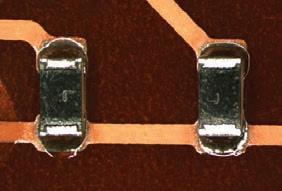
costs compared to traditionally used subtractive processes. The printed technology selected is as close as possible to readily available technology: copper-based circuits are widely used with rigid boards. The assembly process used with this new copper printed flexible electronics utilizes the same equipment present in a standard card attach line as to streamline the transfer of that technology to existing assembly plants.
Therefore, copper printed circuits were selected as the best option for the following advantages:
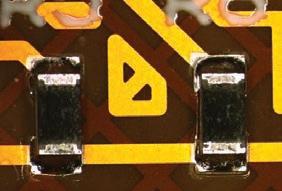

1 Reducing chemical consumption compared to current pcb technology: Printed circuit board manufacturing is currently made with subtractive processes. These processes require harsh chemicals such as copper etching solutions. Direct printing of circuits doesn’t require those harsh chemistry and consume less copper per unit manufactured compared to the subtractive processes currently used within the industry.
2 Meeting the standards: copper is a documented reliable mater ial and show no signs of electromigration during reliability testing. Wetting is one of the criteria of IPC standards for quality control. With our printed circuit technology, we obtain wetting that would be acceptable under IPC-A-610. Testing was also done after assembly and the circuits were having similar energy consumption and LED output compared to an available flexible circuit manufactured with traditional PCB technology.
3. Reducing the overall costs of printed products: Reducing the cost of inks by more than 50% in comparison to silver
inks. Using copper printed traces instead of silver enables the use of solder paste as component attach material. Solder pastes are widely used in the card attach industry and are between 10 and 100 times cheaper than component attach materials commonly used to attach components on silver traces.
This new technology has the advantage of both solutions present on the market namely the advantage of a printing technology that doesn’t rely on harsh chemicals, cut costs, and minimize waste through an additive process instead of a subtractive one. All of this is achieved while maintaining the same reliability obtained with currently used PCB technology. This new technology is a great example of what C2MI has at its core value, providing a solution to customers that are low cost, reliable and with less waste.
The study was performed by C2MI and ETS, involving a close collaboration between Sylvain Cloutier Professor and Chair of the Electrical Engineering Department at École de technologie supérieure (ETS) Canada Research Chair in Printable Optoelectronics Materials & Devices and Chr istophe Sansregret, Process development engineer in printed electronics and microelectronics assembly at C2MI along with a team composed of ETS Students ( Arjun Wadhwa, Alain Picard, Luis-Felipe Gerlein, François-Xavier Fortier, Debika Banerjee, Jaime Benavides and Alexandre Perroton) as well as C2MI team members (Julien Néron and Sylvain Yergeau), features conclusive results.
https://www.c2mi.ca
MiQro Innovation Collaborative Centre (C2MI) is based in Bromont, Québec.
@EPTmagazine July/August 2023 / EP&T 9
THINK GREEN
C2MI copper-based printed circuits.
Copper foil based flexible printed circuit boards (F-PCB).
Photos (this page, from top): C2MI
Copper circuits printed on flexible polyimide.



The future of IoT boot loader technology
BY MICHAEL REDDING, CHIEF TECHNOLOGY OFFICER — QUANTROPI
Many experts are predicting that Y2Q, which marks the day when a commercially viable quantum computer will be capable of cracking today’s encryption, is much closer than previously thought. As Y2Q approaches, developers face the challenge of deploying quantum-secure digital signatures that can be used in boot loaders and other critical operations.
When a connected device is turned on, whether it is a phone, an automobile, or a smart doorbell, a boot loader goes into action. This simple yet critical process initializes the device hardware, validates the firmware and, if verified, loads the firmware into the device’s memory, launching the sequence of events that makes the device operational.
As the first piece of software to run when a device is powered up, the boot loader plays a critical role in system security. If the boot loader is compromised, it opens the door for bad actors to gain access to the system. To address this vulnerability, boot loaders use encryption to verify that the digital signature of the firmware is valid and trusted.
For hackers, breaking or spoofing the digital signature encryption and gaining access to the system is a task that is about to get much easier. Advances in quantum computing aided by AI and machine learning are now threatening to undermine the encryption utilized by boot loaders.
Expanding quantum-secure encryption to IoT
Quantum IoT devices pose a threat to encryption because they provide the computing power to quickly solve the complex mathematical algorithms
upon which encryption is based, giving hackers the power to calculate the keys that keep encryption algorithms secure. Once the key is obtained, hackers can unlock data and compromise the systems that are secured by encr yption.
The power that conventional IoT devices provide has already proven to be capable of cracking certain levels of encryption. In response, security solutions have turned to more complex algorithms producing longer encryption keys. However, this path leads to problems for PQC boot loaders and other devices that require fast processing and have limited computational and memory resources.
Devices such as the uLoadXLQ Quantum Secure Boot Loader solve this problem by providing an encryption protocol based on lightweight post-quantum dig ital signature algorithms that feature small signatures and f ast verification. It allows for digital signatures that have been secured by quantum-resistant encr yption to be quickly verified, ensuring that only the authorized firmware is launched and installed. If the digital signature cannot be verified, indicating that the system has been accessed by an unauthorized entity, the boot loader shuts down the boot process and prevents the installation of a corrupted OS or unauthor ized applications.
The uLoadXLQ system also uses a digital signature generated from a quantum random number, so the key is as strong as possible. This functionality allows the system to achieve the level of entropy needed to provide true quantum-resistant encryption. Limited entropy is an issue that results in weak cryptographic keys and diminished secur ity.
5.8
million malware attacks were carried out on IoT devices in December 2021, growing dramatically from the previous year.
The challenge of securing IoT boot loaders
The more than 14 billion devices that make up the Internet of Things (IoT) commonly rely on boot loaders to support their operations. These devices typically share sensitive data over vast networks, but unlike computers, these devices typically run on very limited resources, making lightweight security a necessity.
Attacks on IoT devices have grown dramatically in recent years. According to cybersecurity statistics, over 5.8 million malware attacks were carried out on IoT devices in December 2021. In December 2022, the number of attacks topped 10.5 million.
By deploying ransomware on IoT devices, hackers can take over the functionality of devices, locking out users until a ransom is paid. This could involve taking control of a smart thermostat or computer-aided systems in a car. When unleashed on mission-critical systems, such as those

12 ELECTRONIC PRODUCTS & TECHNOLOGY / July/August 2023 EPT.CA
IOT FEATURE
Photos (this page, from top): Adobe
delivering or regulating medications, ransomware attacks targeting IoT devices can be extremely damaging.
The use of IoT devices in the corporate world has created what is known as the “shadow IoT.” This refers to IoT devices such as smart speakers or smart TVs that are added to an organization’s network without the approval of the IT department or the application of enhanced security measures. These devices then become the weak link in the organization’s network security.
A recent report by the global management consulting firm McKinsey & Company envisions the IoT as a tool that could dramatically improve virtually every area of our lives, but achieving that vision would require IoT devices to gain greater public trust. To do that, McKinsey says, the IoT’s cybersecurity vulnerabilities must be overcome. The adoption of quantum-resistant boot loaders would be a major step in that direction.

The growing need for boot loader security
The threat that unsecured IoT boot loaders pose is illustrated by recent regulations implemented in the United Kingdom that address chargers for electric vehicles (EVs). These regulations seek to secure EV chargers, which are required to be connected
support the chargers. At a minimum, attacks could result in the theft of electricity or credit card data. However, security experts also envision scenarios in which hackers could use EV chargers to gain access to and shut down power grids.
The ongoing progress toward Y2Q combined with our increasing dependence upon IoT devices points toward a future of unparalleled security challenges. Now is the time to deploy the tools that will ensure security in a post-quantum world.
https://www.quantropi.com
to the internet, against attacks by bad actors.They stipulate that IoT devices include secure boot technology and automatic disconnect in cases where security is threatened.
The regulations are meant to address concerns about the ways hackers could capitalize on IoT vulnerabilities to gain access to the networks that
Michael Redding, chief technology officer of Quantropi, is an avid keynote speaker and guest panelist at quantum cybersecurity conferences internationally.
Quantropi is an Ottawa-based player in the quantum-secure data communications space. The firm’s QiSpace is the only end-to-end quantum security SaaS platform with all three prerequisites for cryptographic integrity – Trust, Uncertainty and Entropy (TrUE)
@EPTmagazine July/August 2023 / EP&T 13
The power of conventional IoT devices has already proven capable of cracking certain encryption levels


The Internet of neverending things
Is it possible to stay ahead of the continuous design cycle?
BY BRAD REX, DIRECTOR, SYSTEM AND SOLUTIONS, RENESAS ELECTRONICS
Hardware design. Software implementation. Cloud integration. AI/ML. Security. Over-the-air updates. Modern IoT designs are massively complex, requiring a much broader eng ineering skillset than just a decade ago. This makes development a daunting task. Reduced personnel with tighter deadlines may force one to drop features and cut corners to get to market on-time. But, software and design tools exist on the market to accelerate all parts of the design cycle from concept to hardware fabrication. In many cases, these tools require zero knowledge of hardware or software design.
In this article we will explore how these design tools are evolving to assist engineers to develop efficiently and at a f aster rate Modern design of embedded electronics systems is easier than ever. Depending on the design’s complexity, you can design, validate, and have prototype hardware samples on hand in just a matter of weeks, if not days. Even though designs are becoming increasingly complex, many of the tools, software/hardware modules, and cloud connection schemes have standardized to a point where much of it can be automated but still provide a level of uniqueness for each IoT design.
The design paradigm is shifting to provide more value and reduce time to market, while simultaneously trying to reduce the workload and demand of engineers. In just the past two decades, we have seen a huge shift in hardware design processes. These shifts have allowed for a
continuous development philosophy, where fast idea generation can be proven out quickly and turned into a product much faster than before. Previously, designs were often bespoke, tailored for the exact specification, form and fit of any design. Software development could often not be started until after hardware was fabricated and assembled, effectively linearizing the design cycle. If the hardware did not work or a workaround could not be implemented, that increased the project timelines.
Complete SoM or SBC
Then, hardware got cheaper to produce, and it could be manufactured very quickly anywhere in the world. The platform design concept, where a single pcb design could be populated and depopulated to serve different product definitions, became the easiest way to develop a family of products. Combining this with the Internet, open source, sharing, and community involvement
reduced the investment needed to quickly try out a new idea, or to put a product into market.
Single-board computers (SBCs), such as Arduino and Raspberry Pi became household names in the engineering community, and System on Modules (SoMs) gave users access to a wide feature set with little to no hardware investment and only a small price premium when purchasing the complete SoM or SBC. While it would not be recommended to go to market with a community-styled SBC (supply chain issues, over-specified, and higher cost), it could be possible in smaller volumes, and many products are in the market today using them.
Taking this modular development approach a step further, tools exist on the market today that automate the system design approach to actual hardware development. Tools such as the CELUS Design Platform allow you to systematically create your design from logical units
in a hardware design (processor, sensors, wireless connectivity, LEDs, power rails, etc.), select potential component candidates for these blocks from vendors of your choosing, and then automatically create an EDA package with those exact parts and that exact design. In another example, Upverter from Altium allows you to take pre-developed hardware modules and drag and drop them into a design. Once signals are hooked up properly, Upverter will compile your EDA project and can even send it out for manufacturing and assembly. This may not be as fast as one-click buying from one of the world’s largest e-commerce websites, but we are approaching that level of automation and sophistication.
Softw are development has also gone through its own cycle of reuse and modularity but did so much earlier than hardware. Open-source initiatives were the first to put large pieces of software into the hands of developers with little to no cost. Collaborative and distributed software design and repositories like GitHub further aim to bring together many disparate groups and people across the globe to work together on solving challenging software designs.
Spatial motion context
Some companies are now trying to glue together modular hardware and software design. In the DevOps IT world, low code and zero code methodologies, where you drag and drop your system flow together with very little code development effort, have been the norm for many years. This mentality is starting to bleed over into product design, where companies are building workflows that allow you to put together hardware module blocks like development kits, modules, SOMs, and SBCs and then automatically apply appropriate code for that system.
Quick-Connect Studio from Renesas is such a tool, allowing you to drag and drop hardware components together. The online browser environment allows

16 ELECTRONIC PRODUCTS & TECHNOLOGY / July/August 2023 EPT.CA
IOT FEATURE
The design paradigm is shifting to provide more value.
Photos (this page, from top): Renesas Electronics
users to graphically visualize their system just like the real development hardware they have, and then automatically create a software application project with those exact components.
As an example of how this would translate to a real-world application, let’s assume you pull together a microcontroller, Bluetooth LE connectivity, and a 6-axis inertial motion sensing unit. It would be logical to think that this system wanted to determine spatial motion context and send that data to a mobile phone application. The base software would automatically be constructed to perform this task, shifting the engineering lift from low-level coding of drivers and Bluetooth Low Energy profiles to developing a better user exper ience with a mobile app or doing additional sensor fusion or machine learning.
In another example, if a microcontroller was paired with Wi-Fi connectivity and an air-quality and temperature sensor, this system is operating very similar to a weather or air quality monitor. This data would be sent to a cloud service provider over Wi-Fi where it could be analyzed and then pushed down to mobile phones that are subscribed for updates. The point with these two examples is that the low-level software for reading sensor data, formatting it, and sending it to a server is not novel and unique. That problem has been solved many times over, so it should be automated, thus freeing the engineer to work on other, more complex tasks.

The next big thing everybody is talking about across many industries is ChatGPT and large language models. The AI bot is in its infancy, but it is
016008C Series
conceivable that it could design hardware and software with not much more than a descriptive language of what problem you may be trying to solve. Assuming it was properly trained with datasheets, hardware user manuals, and design and manufacturing rules, ChatGPT could produce quality hardware designs based on descriptive documentation, and potentially with fewer errors. The same goes for software. ChatGPT can already produce code, but if it was fed with your coding standards and if it had already analyzed how drivers and middleware components were coded for your system, the AI bot engine could easily create code that had the same style, look and feel, and software design paradigms that your company specializes in. As people start to expand ChatGPT in time-saving ways, it will only be a matter
of time before hardware and low-level software design can be completed automatically, allowing engineers to focus on other aspects of their product to create value and drive business.
We are in a golden era of electronic design. With reduced effort, engineers have many tools at their disposal to accelerate the design of hardware and the accompanying software. Within the next few years, large language models will play a bigger role in this space, but the goal is the same - spend less time on hardware & software product design and lear n to automate, while refocusing on value-add or features that can improve customer engagement.
https://www.renesas.com
Renesas is a global leader in microcontrollers, analog, power and SoC products.
The World’s Smallest Wirewound Chip Inductor!
• Measures just 0.47 x 0.28 mm with a height of 0.35 mm

• Choose from 36 precisely-spaced L values from 0.45 to 24 nH
• Higher Q than all thin film types: Up to 62 at 2.4 GH
• Ideal for high-frequency applications, such as cell phones, wearable devices, and LTE/5G IoT networks
Free Samples @ coilcraft.com
@EPTmagazine July/August 2023 / EP&T 17
EPT_Coilcraft_JulyAug23.indd 1 2023-06-13 10:00 AM
Capacitive sensor delivers human touch
Miniature paper carbon nanotube capacitive device

Somalytics Inc., a Redmond Washbased developer of disruptive technology related to human machine interaction is revolutionizing the Internet of Things (IoT) and consumer interactions with its ground-breaking, paper-based capacitive sensors. These devices enable new levels of gesture control, eye tracking and Human-Machine Interaction (HMI).
As a CES Innovation Award honoree, Somalytics is driving changes in all categories of tech.
EP&T joins Somalytics CEO Barbara Barclay in conversation to learn more about the firm’s cutting-edge technology.
How does the SomaCap sensor operate.
The SomaCap is a new type of capacitive sensor that allows consumer product manufacturers and developers to advance the human exper ience with IoT.
These are ultra-high sensitivity, fast response, capacitive sensors built using substrate filled with carbon nanotubes, therefore creating a carbon nanotube-infused paper that can ‘feel’ human presence at up to 200 millimeters.
They are a new valuable embedded technology for companies working to improve customer experiences with products through more natural and intuitive human-machine interactions.
What materials are integral to the sensor’s operation?
The SomaCap capacitive sensors are made from patented carbon nanotube composite (CPC), which we manufacture by infusing paper with carbon
nanotubes. The paper is water printed, fractured and the sensor is encased in Polyethylene Terephthalate (PET.) The water-induced fracture reorganizes CPC fiber s parallel to each other, increases the surface area, and enables contact and non-contact detection modes.
What design applications is it most suited for?
SomaCap sensors are the world’s smallest nano-based capacitive sensors. Due to their sensitivity, they can be used for eye tracking, gesture, control touch and fluid monitoring and can improve the human experience in consumer electronics, AR/VR, IoT, health & wellness and transportation.
What are the most defining features of these sensors?
It’s their ability to deliver such a high level of sensitivity in a smaller size and at a lower cost than other available sensor technologies. They range in size from 1mm to 11mm in diameter and detect human tissue up to 20cm away.
The sensors are low latency, less than 3ms, and operate at a speed up to 1,000Hz. These properties enable the human experience with digital technology and IoT to evolve in ways that
were previously not possible.
What elements are critical for SomaSleep eye-tracking sleep mask to have success in the sleep study field?
SomaSleep is a first-of-its-kind sleep mask that uses eye tracking to unmask the wellness challenges preventing better sleep by collecting data never before possible through an in-home device.

The sleep mask can track eye movement, including Rapid Eye Movements, to help consumers better understand sleep stages, quality, and disruptions that are key to wellness insights and improving sleep.
Sleep problems affect the lives of billions of people and understanding the quality of sleep is at the hear t of the solution. REM is critical for learning and memory. Things such as snoring, back and leg problems, medication, anti-depressants, concussions, stroke, and other neurologic illnesses can disrupt sleep and in particular, REM.
Until now the only option to track REM was through sleep centers, where data is typically manually interpreted. With SomaSleep, we are enabling consumers to track all stages of sleep including REM in the comfort and privacy of their own homes
through a lightweight, easy to use sleep mask.
The mask has SomaCap sensors embedded that capture eye tracking data relevant to this critical analysis of sleep quality. This is a transformational moment for in-home wellness and our team is thrilled to have a role in bringing to market such an important product.
What are the advantages of designing with a Somalytics sensor in replacement of passive infrared (PIR) sensors?
Somalytics sensors are faster and better than infrared. Our sensors can detect human presence at 200mm by sensing the electric charge emitted by a human, which displaces the electric field of the sensor.
Compared to existing capacitive sensors, Somalytics’ are 100 times smaller and 10 times faster, with greater range for sensing proximity and pressure. Offering unprecedented sensitivity to human tissue, the sensors acknowledge human presence at up to 20 centimeter s.
They work with any skin tone or eye shape and recognize 3D gestures without the need for any hand device. All of this enables a new generation of touchless technology applicable to almost any interaction between humans and machines.
In terms of eye tracking, Somalytics’ sensors will open an entire new era for wearables because the sensors are not camera based and there is no illumination of the eye required.
The processing speed is under three milliseconds, and the sampling rate is 10 times faster than best-in-class existing technologies. With Somalytics’ sensors, eye tracking will evolve to accomplish the ‘real feel’ and ‘real-time eye to eye’ experience for which augmented and virtual reality users have long waited.
https://somalytics.com
18 ELECTRONIC PRODUCTS & TECHNOLOGY / July/August 2023 EPT.CA IOT FEATURE
SomaSleep eye-tracking sleep mask collects data never before possible.
Photos (this page, from top): Somalytics (Marcus Donner) The full Q&A interview can be viewed online at https://somalytics.com
ENCLOSURES ARE FLAME-RETARDANT HAMMOND
ABS IP54 1556 family modern general purpose enclosures are flame-retardant, rated UL94-V0, and inspired by firm’s recently launched IP68 polycarbonate 1557 series. Products follow the same modern rounded corners and top face styling and introduces rectangular versions to complement the square format versions. IP54 sealed for general purpose indoor use, the ABS material is designed for installation outdoors and in aggressive environments.

https://www.hammfg.com/electronics/ small-case/plastic/1556
DC-DC CONVERTERS PROVIDE ULTRA-WIDE 8.5V - 160V INPUT
TDK-LAMBDA
PYD20 series of 2” x 1” footprint dc-dc converters are capable of operating from an ultra-wide 18:1 input of 8.5 to 160Vdc. Devices are compatible with 12V, 24V, 48V, 72V and 110Vdc nominal system voltages. Applications include railroad rolling stock and trackside equipment, robotics, power generation and scientific research equipment. Converters are available with 5V, 12V, 15V single and +/-12V, +/-15V and +/-24 dual outputs. The dual models can be configured to provide a 20W single 24V, 30V or 48V output.
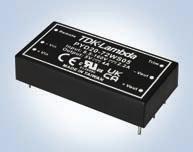
https://www.us.lambda.tdk.com
TOUCHLESS HIDDEN SWITCH IS CONCEALED SCHURTER
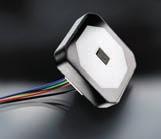
THS switch series with optical sensor technology can be concealed behind any surface without the need for mounting holes. A small opening in the user interface is all that is needed to allow the ToF sensor to actuate. The touchless switch provides a hygienic solution to prevent the spread of pathogens. It not only serves its practical purpose as a momentary switch, but also adds an element of design for out of the
ordinary sleek and sophisticated custom user interface design.
https://www.schurter.com/en/datasheet/THS

EDA SUITE ACCELERATES 5G MMWAVE DESIGN KEYSIGHT TECHNOLOGIES
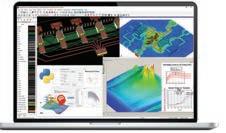
PathWave Advanced Design System (ADS) 2024 is an electronic design automation (EDA) software suite giving chip designers new millimeter wave (mmWave) and subterahertz (sub-THz) frequency
capabilities that accelerate 5G mmWave product design and anticipate requirements for 6G wireless communications development. Next-generation solvers, application-aware meshing algorithms, and innovative circuit co-design and simulation approach speed 3D electromagnetic analysis.
https://www.keysight. com/ca/en
To Be Strategic
StripCrimp 208
Flexible, Reliable, and Intuitive Stripping and Crimping Machine
The StripCrimp 208 combines standard working processes of stripping and crimping rear- and side-feed terminals in a single machine. It features an intuitive color touch screen, job memory, ample stripping power, new gripper assembly, and short breakout lengths. And the HMI doubles as the interface for optional crimp force monitoring.

Intuitive 7“ color touch screen
Short breakout lengths of 22 mm (0.86“) for multiconductor cables
Quick-change system for all standard rearfeed and side-feed applicator tools
Optional crimp force monitoring
Wire Solutions for a Connected World schleuniger.com 905-827-1166
@EPTmagazine July/August 2023 / EP&T 19 DESIGN SOURCE
NEW PRODUCTS
EPT_Schleuniger_JulyAug23.indd 1 2023-07-07 9:11 AM
ACQUISITIONS
DIC CORP. BUYS PCAS CANADA
DIC Corp. has acquired 100% of the shares of Quebec-based PCAS Canada Inc. from French based company PCAS S.A., which manufactures and sells polymers used in photoresists for semiconductor photolithography. PCAS Canada, which has a manufacturing site southeast of Montreal, boasts state-of-theart production technologies and mass production know-how, and excels in delivering photoresist materials with the superior purity and low metal content required for use in semiconductor photolithography. DIC is confident that the combination of these production technologies with its own synthesis technologies, a key strength, will enhance its ability to respond to the needs of the semiconductor industry, which continues to be driven by technological progress, thus further contributing to digital innovation.
RENESAS ACQUIRES PANTHRONICS
Renesas Electronics Corp., supplier of advanced semiconductor solutions, announced its successful completion of acquiring Panthronics AG, a fabless semiconductor company specializing in high-performance wireless products. Within the deal includes 13 ‘Winning Combination’ solution designs that combine Renesas’ products with Panthronics’ Near-Field Communication (NFC) technology, showcasing the continued expansion of Renesas’ portfolio, specifically in the connectivity space.
“NFC is now widely used in our daily life, and its market is
expected to grow exponentially for both industrial and automotive use cases,” said Sailesh Chittipeddi, executive VP & general manager of the embedded processing, Digital Power and Signal Chain Solutions Group.
Headquartered in Graz, Austria, Panthronics has been offering advanced NFC chipsets and software that are easy to apply, small-in-size, and highly efficient for payment, IoT, asset tracking and wireless charging.
MATERIALS
INTLVAC THIN FILM EXPANDS SOLUTIONS

Intlvac Thin Film, a Halton Hills, Ontario-based advanced manufacturing firm is expanding its global customer base with its Nanoquest product lines, used to delayer and analyze integrated circuits.


source to remove IC chip material by physical inert gas means and chemical reactive gas means.
“For years we supplied our Nanoquest product lines for failure analysis where the end application was in semiconductor chip analysis and we experienced year after year growth in that market,” explained Intlvac president Dino Deligiannis. “Integrated chip analysis has recently changed especially with enhanced scrutiny and security on components and integrated circuits inside telecom/datacom networks becoming of interest for national security reasons we are experiencing significant growth in this market.”
TEST
KEYSIGHT TEAMS WITH UWINDSOR
Keysight Technologies has teamed with the SHIELD Automotive Cybersecurity Centre of Excellence at the University of Windsor to provide automotive engineering students with advanced cybersecurity training with the Keysight SA8710A Automotive Cybersecurity Penetration Test Platform.
The SHIELD program is dedicated to advancing and developing automotive cybersecurity solutions by training engineering and computer science students to ensure tomorrow’s vehicles are safe and secure. With drivers expecting their automobiles to be fully integrated into their digital lifestyles, the nature of vehicles is becoming more software-centric.
CONNECTORS
PEI-GENESIS OPENS PRODUCTION FACILITY
PEI-Genesis, global assembler/ distributor of connectors, announced the opening of a new production site in Philadelphia, PA. The facility will support the increasing demand for D-Subminiature connectors, arguably the most versatile interconnect product on the market. It will be utilized to supplement PEI’s largest facility in South Bend, Indiana, to enable quick turn value-add D-Sub products to customers worldwide.

“By localizing PEI’s manufacturing capabilities around the world, we can get closer to our customers, allowing us to support their needs more quickly than ever. This new facility in Philadelphia will aid the ever-growing demand for D-Subminiature connectors,” says Steven Fisher, chairman and CEO of PEI-Genesis.
The D-Sub facility is 16,000 sq ft connected directly to PEI-Genesis’s headquarters and stocks roughly $6 million worth of ITT Cannon connector components and finished goods.
PATENTS
HERAEUS, BOSCH SIGN PATENT LICENSE AGREEMENT
Heraeus Electronics and Robert Bosch GmbH have signed a patent and know-how license
Intlvac has clients in the aerospace & defence, medicine, telecommunications, energy, hydrogen fuel cells, optics and photonics industr ies. The firm uses its broad ion beam etching (IBE) technology which advances delayering outcomes, including tight layer planarization, nanometer etch layer precision, universal material removal and removal uniformity across layer. Ion Beam Etching is a dry plasma etch method which utilizes a remote broad ion beam
Known as software-defined vehicles (SDV), these autos deliver new connectivity, personalization, and automation features through highly complex software operating systems. While SDVs promise increased safety and convenience, their hyper-connected systems make them vulnerable to cybersecurity threats.
agreement at the PCIM Europe exhibition in Nuremberg, Germany. The agreement allows Heraeus Electronics to access a valuable patent portfolio from Bosch to accelerate the development of their inorganic potting compound, CemPack, for encapsulation of power modules.
20 ELECTRONIC PRODUCTS & TECHNOLOGY / July/August 2023 EPT.CA SUPPLY SIDE
Photos DIC Corp.; Intlvac; PEI Genesis; Heraeus








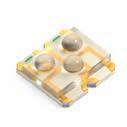











@EPTmagazine July/August 2023 / EP&T 21 Flat Pack Laser Low Profile; Easy Mounting; Alignment Laser Laser Head Rotates and Tilts for Exact Alignment BEA Lasers New Quartz Window E²L Alignment Laser for Extreme Environments! BEA’s lens offers a quartz glass barrier to anything you BEA Lasers New Quartz Window E²L Alignment Laser for Extreme Environments! BEA’s lens offers a quartz glass barrier to anything you (847) 238-1420 www.bealasers.com 1400 Howard Street Elk Grove Village, IL 60007 Phone: 847.238.1420 www.bealasers.com The “FLAT PACK” Laser from BEA Lasers 1.93” (L) x 1.26” (W) x 0.88” (H) Aluminum Housing Red or Green: Dot or Line Pattern Power Supply Included New Product EPT_BEAPS_Aug20.indd 1 2020-07-23 5:42 PM EPT_BEAPS_.indd 1 2023-03-27 1:12 PM EPT_Blcokmaster_JulyAug23_CSA.indd 1 2023-06-26 12:14 PM EPT_AbsopulsePS_JulyAug23.indd 1 2023-07-06 1:44 PM Order Online! www.interpower.com Interpower® 1-Week Lead-Times Are Back Interpower returns to its unique 1-week lead-times on North American and international cords. Let Interpower ease your supply chain pain—in-stock cords ship same day. Relax. No Kidding EPT_InterpowerPS_JulyAug23.indd 1 2023-06-30 9:09 AM +1.201.343.8983 ∙ main@masterbond.com www.masterbond.com SILVER FILLED, ONE PART EPOXY EP3HTS-TC offers superior THERMAL CONDUCTIVITY OF 16-17 W/(m•K) • Not premixed & frozen • NASA low outgassing • Very long open time at room temperature EPT_MasterBondPS_JulyAug23.indd 1 2023-06-19 2:23 PM C M Y CM MY CY CMY K Diverse-2.5x2.4"-300x250px@061423(o).pdf 1 6/16/23 8:06 AM EPT_DiversePS_July23.indd 1 2023-06-19 11:51 AM (847) 956-1920 www.TUSAINC.com PANEL MOUNT BEEPERS & BUZZERS In Stock! Competitive Prices! Free Samples! IP65 RoHS High Audio / Lighted Output! Listen to Our Product Selection Online! EPT_JanFeb_Tusainc.indd 1 2017-12-08 2:07 PM EPT_TransducersPS_April23.indd 1 2023-03-27 1:30 PM TO ADVERTISE in an upcoming issue of EP&T, contact Chander Verma, Sales Manager, cverma@annexbusinessmedia.com | 437-218-0941 Joanna Malivoire, Account Manager, jmalivoire@ept.ca | direct 866-868-7089. PRODUCT SOURCE GUIDE AD INDEX ABSOPULSE Electronics Ltd. 21 BEA Lasers 21 Blockmaster 21 Coilcraft 17 Digi-Key Corporation IFC Diverse Electronics 21 Dynamic Source Manufacturing 3 EPTech Fall Events . . . . . . . . . . . . . . . . . . IBC Interpower Corporation . . . . . . . . . .6 & 7, 21 Master Bond Inc . . . . . . . . . . . . . . . . . . . . 21 Mouser Electronics . . . . . . . . . . . . . . . 14 & 15 Phoenix Contact Ltd . . . . . . . . . . . . . . . OBC Schleuniger, Inc. 19 TDK-Lambda Americas Inc. 10 & 11 Transducers USA 21 Joanna Malivoire (416) 881-0731 Jmalivoire@ept.ca Chander Verma (437) 218-0941 cverma@ept.ca CONTRACT ELECTRONICS MANUFACTURING GUIDE Canada’s Complete Manufacturing Resource COMING IN SEPTEMBER Reach Canada’s Electronics Audience GOING DEEP NeuronicWorks deepens its customer relationships via production capability p.10 TEAMWORK Dorigo Systems endures challenges driven by the pandemic P.12 PATENT PARTNERS M.I.S. leverages its patents to convert CEM customer uccess p.24 BRIDGE THE GAP Optimizing the supply chain has huge potential for OEM profitability p.14 CANADA’S FOR ELECTRONIC ENGINEERS AND EPT.CA SUPPLEMENT ELECTRONICS MANUFACTURER for your project on pages 18-23
DEVELOPMENT BOARDS
TRAVEO T2G Body High Lite Kit
VENDOR: INFINEON
ORDERABLE PART NUMBER: KIT_T2G-B-H_LITE
Dev board enables you to evaluate and develop applications using the TRAVEO T2G Body High MCU (TRAVEO T2G-B-H MCU).
Automotive & Industrial
Designed for automotive and industrial applications, TRAVEO T2G-B-H MCU is a true programmable embedded systemon-chip, integrating up to two 350-MHz Arm Cortex-M7 as the primary application processors, a 100-MHz Arm Cortex-M0+ that supports low-power operations including HSM (Hardware Security Module), up to 8MB flash and 1MB SRAM, Secure Digital Host Controller (SDHC) supporting SD/SDIO/eMMC interfaces, programmable analog and digital peripherals that allow faster time-to-market.
Compatible with Arduino
The evaluation board carries a T2G-B-H, a MikroBUS (Mikroelectronica) and two Sheild2Go connectors, and headers compatible with Arduino for interfacing Arduino shields. In addition, the board features an onboardprogrammer/debugger (KitProg3), a 512-Mbit QSPI NOR flash, CAN FD transceiver, Ethernet PHY transceiver with RJ45 connector interface, a micro-B connector for USB device interface, three user LEDs, one potentiometer, and two push buttons. The board supports operating voltages from 3.3 V to 5.0 V for T2G-B-H. You can use ModusToolbox software to develop and debug your TRAVEO T2G-B-H MCU projects.
Integrate into development methodology
Design Applications:
G ateway Communication
• Body Mod ule Control
Climate, Door and Seat control
• Transportation Body Electronics for off-highway vehicles: Agriculture & Industrial
• Motor Control for Industrial And Transportation
High-Level features:
TRAVEO T2G-B-H MCU – CYT4BF8CDDQ0AESGS (TVII-B-H-8M). This Microcontroller features:
• 2x ARM Cortex-M7, 350 MHz, ASIL-B

• 8MB code flash + 256KB work flash + 1024KB SRAM, and Cortex®-M0+ for HSM
• eMMC, 1GB Ethernet, FlexRay, I2S/TDM True FOTA (Firmware Over the Air) capabilities
• 2 .7-V to 5.5-V supply voltages with Ultra Low Power features
Up to 10-ch CAN FD and 20-ch LIN-UART
• 176-pin TEQFP
512-Mb external Quad SPI NOR flash that provides a fast, expandable memory for data and code.
• KitProg3 on-board SWD programmer/debugger, USB-UART, and USB-I2C bridge functionality.
• A micro-B connector for USB device interface
Selectable input supply voltages of 3.3 V and 5.0 V for the TRAVEO™ T2G-B-H MCU.
• Three user LEDs, two user buttons, and a reset button for the TRAVEO™ T2G-B-H MCU A potentiometer which can be used to simulate analog sensor output
• A mode button and a mode LED for KitProg3
The software is a set of tools that enable you to integrate these devices into your existing development methodology. It serves as a free development eco-system that includes the Eclipse IDE for ModusToolbox software and the TRAVEO T2G-B-H SDK with TRAVEO T2G-B-H MCU. Using ModusToolbox software, you can enable and configure device resources, and middleware libraries; write C/ assembly source code; and program and debug the device. Scan here to view more information.
22 ELECTRONIC PRODUCTS & TECHNOLOGY / July/August 2023 EPT.CA
Photo: Infineon Technologies
Join us at EPTECH this Fall
EPTECH 2023
EPTECH is back! Connecting you with the electronics market throughout Canada.

Eptech is an efficient table top show, which allows exhibitors to easily set up their display and showcase innovative products to OEM’s throughout Canada.
Book today to to reserve a great position. Receive exclusive face-to-face networking opportunities with attendees including OEM’s, designers, engineers and project managers. Exhibitors also have the opportunity to host on-site seminars to discuss new products and solutions for electronics projects.
Book your space today
TO REGISTER VISIT:
Eptech.ca SCAN HERE!
Montreal
September 6
Calgary
September 26
Mississauga
October 16
When technology and expertise come together





Phoenix Contact’s expertise spans a wide range of applications so that you can make power, control, and network connections with absolute confidence. Robust IP69-rated housings from the ECS series are UV rated and protect sensitive electronics from dust, dirt, and water. With a temperature range from -40°C to 100°C, ECS easily meets challenging conditions. No matter the application, you can trust Phoenix Contact for consistent quality, reliability, and high performance — every time.






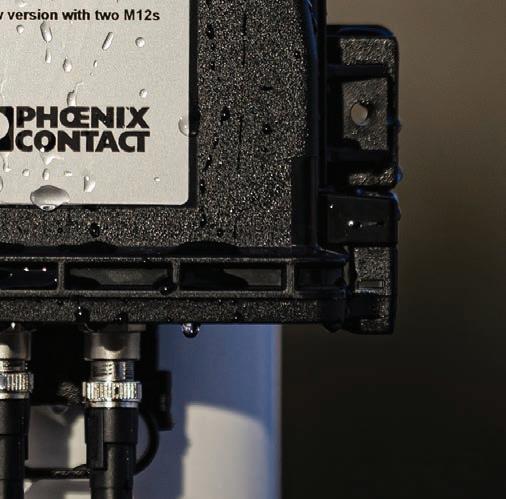
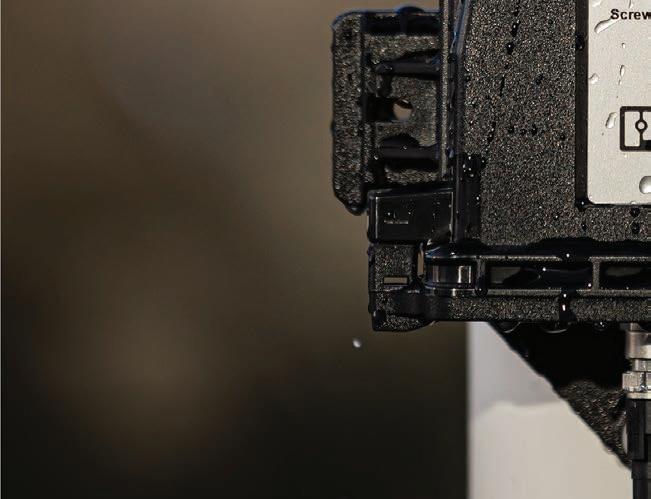
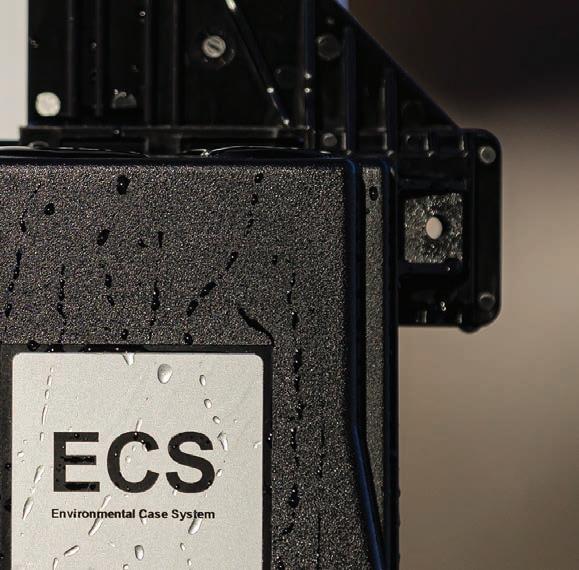
For additional information, visit www.phoenixcontact.com/ECS

© PHOENIX
2023
CONTACT






















































































